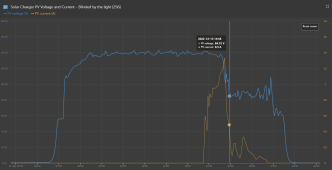MisterSandals
Participation Medalist
So with 1 panel actually facing the sun, are volts ~22Voc (~18Vmp.), and amps ~5A?But when I tilt the panel to match the sun I get a much more respectable 5A.
This is enough for your charge controller to work with a 12V battery.
18Vmp x 5A = 90W
If your charge controller is not seeing this, then check the connections.



